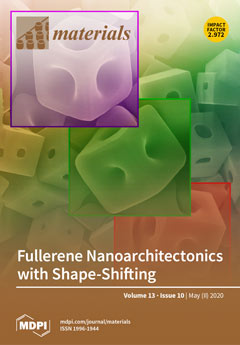Generally in the nickel converter slag, metals are mainly in the form of sulfides, which are difficult to separate from slag. Although metal oxides in the slag, such as NiO, CoO, and Cu
2O, are easily reduced into metal using carbon, the
[...] Read more.
Generally in the nickel converter slag, metals are mainly in the form of sulfides, which are difficult to separate from slag. Although metal oxides in the slag, such as NiO, CoO, and Cu
2O, are easily reduced into metal using carbon, the presence of sulfur inhibits the reduction reaction. In this study, the addition of Fe
2O
3 to nickel converter slag produced desulfurized slag, which enhanced the carbothermal reduction process. Increasing the desulfurization rate promoted the conversion of sulfides into oxides in slag, which significantly increased the activity of NiO, Cu
2O, and Fe
2O
3. However, the residual sulfur content had no significant effect on the activity of FeO and CoO, due to the high initial FeO content and cobalt existing mainly in the form of oxides. The optimum addition of Fe
2O
3 was 15.0 g per 100 g nickel slag, while the desulfurization ratio was 36.84% and the rates of nikel, cobalt and copper recovery were 95.33%, 77.73%, and 73.83%, respectively.
Full article






